In the last world chess championship between Vishy Anand and Magnus Carlsen you may have seen some of my articles in the Hindi language, appended to the reports, though many of you might most likely did not understand Hindi! Perhaps the dual-language text (Hindi & English) below will help you. In any case, don’t worry, I am not going to start teaching Hindi to you, but instead want to take you to the days when the Royal Game Chess was born.
Chaturanga and Shatranj: The precursors of chess originated in India during the Gupta dynasty (c. 280 - 550 CE). Both the Persians and Arabs ascribe the origins of the game of Chess to the Indians. The words for "chess" in Old Persian and Arabic are “Chatrang” and “shatranj” respectively — terms derived from chaturaṅga in Sanskrit, which literally means an army of four divisions or four corps. Chess spread throughout the world and many variants of the game soon took shape. This game was introduced to the Near East from India and became a part of the princely or courtly education of Persian nobility. Buddhist pilgrims, Silk Road traders and others, carried it to the Far East where it was transformed and assimilated into a game often played on the intersection of the lines of the board rather than within the squares. Chaturanga reached Europe through Persia, the Byzantine Empire and the expanding Arabian empire. Muslims carried Shatranj to North Africa, Sicily, and Spain by the 10th century where it took its final modern form of chess.
चतुरंग और शतरंज – शतरंज का जन्म भारत में चन्द्रगुप्त वंश के शासन के दौरान करीब (c. 280 - 550 CE) हुआ ऐसा प्रमाण मिलता है । शतरंज को चतुरंग शब्द से जाना जाता था जिसका मतलब एक प्रकार की चतुरंगनी सेना से था जिसका उल्लेख भारत के रामायण और महाभारत जैसे ग्रंथो मे मिलता है । फारसी इसे भारत से अपने देश ले गए और वंही से ये यूरोप और अरब देशो में पहुँच गया । मुस्लिम इसे उत्तरी अमेरिका और स्पेन की और ले गए । लगभग 10वी शताब्दी के आस पास शतरंज अपने नए रूप में आना शुरू कर चुका था ।
Sanskrit & Hindi - The language known as a Hindi today also originated from Sanskrit during the Gupta dynasty. Formal Standard Hindi draws much of its academic vocabulary from Sanskrit. So chess or chaturanga (army of four divisions or four corps) originated from Hindi & Sanskrit. Chess pieces were actually in the shape of an army of the time. During those times, a king’s army was comprised of hathi (elephants), ghoda (horse), oont (camel), paidal sanik (soldiers) and the Raja (King) and his senapati (general). The commander later became the queen in modern chess after the game reached Europe, though the senapati was the one the most important posts in an Indian king’s army. Much like today’s queen in chess, during the fight the Senapati was the person in charge and also the leader of the entire army. In those days, if the king was killed or captured the defending army had to surrender.
संस्कृत और हिन्दी – आज हम जिसे हिन्दी के नाम से जानते है दरअसल यह भाषा संस्कृत से ही चन्द्रगुप्त वंश के शासन के दौरान प्रादुर्भाव हुई । हिन्दी के अधिकतम मुख्य आधार शब्द और इसका व्याकरण संस्कृत से ही आया है । और शतरंज के जन्म के समय हिन्दी और संस्कृत की मौजूदगी साफ तौर पर थी । और शायद शतरंज पहली बार इन ही भाषा मे सोचा गया । दरअसल उस समय किसी भी राजा की सेना हाथी ,घोड़े ,ऊंट ,सैनिक और उसके सेनापति से मिलकर पूरी होती थी यही सब शतरंज के मोहरो के प्रतीक बने । सेनापति बाद में यूरोप में जाकर रानी मे तब्दील हो गया ।

The above pictures are taken from the different forts in India
भारत के विभिन्न किलो से ली गयी सेनाओ या शतरंज के मोहरो के चित्र





आखिर किस तरह शतरंज के मोहरे आकार मे आए आइए देखते है


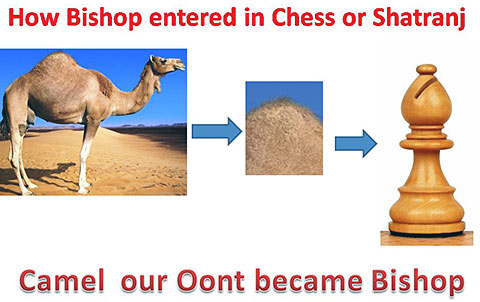
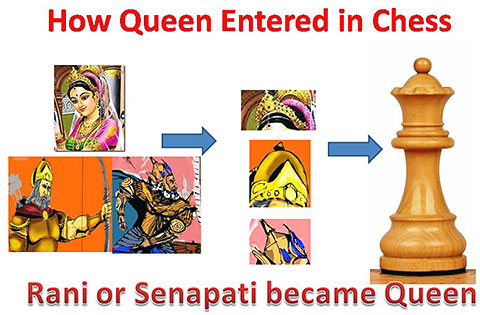
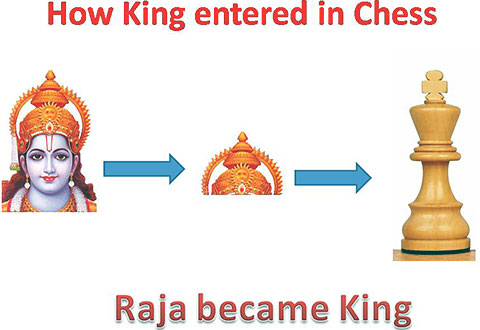

Hindi, also known as Khadi Boli or Khari Boli, belongs to the Indo-Aryan branch of the Indo-European language family. It is spoken as the first language primarily in northern and central India by more than 500 million people. It is the language that unifies multilingual India, home to some 400 different languages and dialects. Outside India, Hindi is spoken in Australia, Bangladesh, Belize, Bhutan, Botswana, Canada, Djibouti, Equatorial Guinea, Germany, Guyana, Kenya, Nepal, New Zealand, Philippines, Singapore, Sint Maarten, South Africa, United Arab Emirates, United Kingdom, United States, Yemen, and Zambia. Such a wide distribution makes Hindi one of the most widely spoken languages of the world. As it is well known that Persian took the Indian chess to Europe, the very name Hindi is of Persian origin. The Persians used it to refer to the Indian people and to the languages they spoke. Scholars postulate that Hindi was developed in the 8th-10th centuries from khari boli, the speech around Dehli which was adopted by the Muslim invaders to communicate with the local population. Eventually, it developed into a variety called Urdū (from Turkish ordu ’camp’), characterized by numerous borrowings from Persian and Arabic, which became a literary language. In the meantime, the language of the indigenous population remained relatively free of borrowings from Persian and Arabic, and instead borrowed words and literary conventions from Sanskrit. This language became Hindi.

हिन्दी भाषा आज दुनिया की तीसरी सबसे बड़ी भाषा है और यह तकरीबन 50 करोड़ से भी ज्यादा लोगो द्वारा बोली जाती है ।जिस तरह सर्वविदित है की फारसी लोग शतरंज को भारत से यूरोप ले गए उसी तरह हिन्दी शब्द भी फारसी लोगो को दिया गया है ।

Book in Hindi - "Shatranj ke khiladi" ("The chess players") is
a Hindi short-story written by the very famous hindi writer,
Munshi Premchand. Premchand also made the Urdu version
titled "Shatranj ki bazi".
शतरंज के खिलाड़ी नामक किताब प्रख्यात हिन्दी कहानीकार मुंशी प्रेमचंद ने लिखी थी । उन्होने बाद मे इसका
उर्दू में भी अनुवाद किया । जिसका नाम शतरंज की बाजी था ।
Bollywood & Chess – Bollywood is the Hindi-language film industry based in Mumbai (Bombay), India. The term is often incorrectly used to refer to the whole of Indian cinema; however, it is only a part of the Indian film industry, which includes other production centers producing films in multiple languages.[1] Bollywood is the largest film producer in India and one of the largest centers of film production in the world. These days the reach of Hindi movies is worldwide and because of Bollywood films Hindi actors are increasingly well-known all over the world .
Shatranj Ke Khilari (शतरंज के खिलाड़ी; The Chess Players) is a 1977 Indian film by world renowned Bengali director Satyajit Ray, based on Munshi Premchand's short story of the same name. Amjad Khan plays the role of Wajid Ali Shah, King of Awadh, and Richard Attenborough plays the role of General James Outram. The film also features the actors Sanjeev Kumar, Saeed Jaffrey, Shabana Azmi, David Abraham and Tom Alter. Unlike most of Ray's films, the dialogue in the film is in Urdu and Hindi. The fastidious research and sophisticated portrayal of clashing cultures earned acclaim from both film critics and historians of the period.
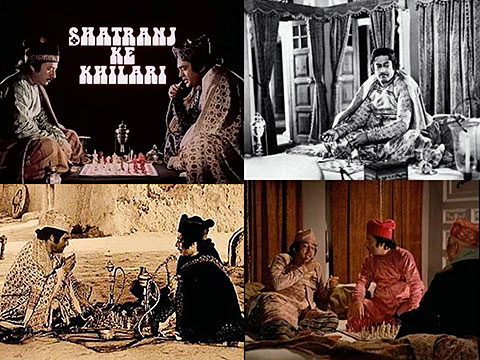
The film is set in 1856 and shows the life and customs of 19th century India on the eve of the Indian rebellion of 1857. The focus is on events surrounding the British annexation of the Indian State of Awadh (also spelt Oudh), the politics of colonial expansion by the British East India Company and the deluded divisions of Indian monarchs.
The Chess Players employed stars of the Bombay cinema (Amjad Khan, Shabana Azmi and Amitabh Bachchan as a narrator) together with Western actors such as Richard Attenborough. Much of the film was shot on location in Lucknow and Rajasthan. Ray was so impressed with Amitabh Bachchan that he decided to use him as the film's narrator since he could not find any suitable role for him.
The film went on to win three Filmfare Awards, including the Critics Award for Best Movie, and was a nominee for the Golden Bear for Best Film at the28th Berlin International Film Festival. It was also selected as the Indian entry for the Best Foreign Language Film at the 51st Academy Awards.
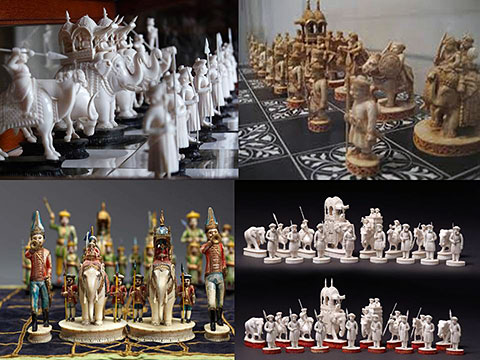
In conclusion I would like to say that the purpose of this research is to bring to light the existence and importance of the Hindi language at the time chess was born. With Hindi being the third most spoken language of the world, it goes without saying that adding it as one of the official FIDE languages would be in the interest and welfare of the game. Right now only English, Spanish, French, German, Russian, Portuguese, and Arabic are the official FIDE languages.
अंत मे बस यही कहना चाहूँगा की मेरे इस लेख का मकसद इस बात को सामने लाना था की शतरंज के जन्म के समय हिन्दी भाषा और उसके शब्दो की स्पष्ट मौजूदगी थी और शायद यह खेल पहली बार इसी भाषा में सोचा गया और समझा गया । इस समय जब की विश्व शतरंज संघ की आधिकारिक भाषा अँग्रेजी ,स्पैनिश ,रूसी ,फ्रेंच ,जर्मन ,पुर्तगाली ,अरेबिक है जिनमे सारे नियम लिखे गए है और किसी भी तरह की योग्यता जो की प्रशिक्षक या निर्णायक बनने ले लिए चाहिए होती है वह इन आधिकारिक भाषा के माध्यम से ही संभव है । हिन्दी को शामिल करने से यह दायरा काफी बढ़ सकता है और इस भाषा का इतना हक़ तो बनता है इस खेल पर ! उम्मीद है आप भी फीडे को अपने ईमेल द्वारा मेरी बात का समर्थन करते हुए लिखेंगे ...आपका निकलेश जैन
I am thankful to Wikipedia, Hindi history books and Mr Kamal Sarecha of Syna International School for their assistance in this article.
विकिपीडिया और हिन्दी के इतिहास की किताबों के साथ साथ श्री कमाल सरेचा जी को इस लेख में मुझे सहयोग करने के लिए धन्यवाद ।







































